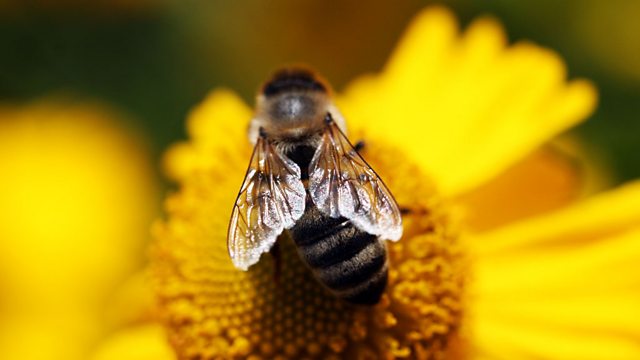Bees, Butterflies and Blooms episode 1: Writer, broadcaster and gardener Sarah Raven is on a mission to halt the rapid decline in Britain’s essential bees, butterflies and pollinating insects by bringing flower power to towns, cities and the countryside.
The world’s bees and other pollinating insects are in crisis. It is a complex problem that scientists the world over are trying to fathom, but the prognosis is grim – without healthy populations of insect pollinators across the world, our future food security is under threat.
Sarah Raven takes her mission out into the Great British countryside to encourage farmers and village communities to help recreate a network of crucial habitats for struggling bees, butterflies and pollinating insects. With the loss of Britain’s wildflower meadows and grasslands estimated at around 98 per cent, Sarah finds out whether we have simply lost our connection with the wildflowers and habitats that were once so common and supported our pollinators.
Sarah starts by attempting to change the attitude of just one small Northamptonshire village. Today tidiness rules and the village green is a close mown carpet of green. Will the village take to her plans and embrace wildflowers, or will tidiness prevail? Sarah also meets the Farringtons – a Northamptonshire farming family spanning three generations. Duncan, who now runs the farm, investigates sowing perennial wildflower borders around his crops to increase habitats for insect pollinators and possibly to increase crop yields.
And at home, Sarah visits wildflower meadows and harvests wildflower seed in order to develop her own wildflower meadow, something everyone can do in their own community or at home.
Bees, Butterflies and Blooms episode 1
Bees are insects with wings closely related to wasps and ants, known for their role in pollination and, in the case of the best-known bee species, the western honey bee, for producing honey. Bees are a monophyletic lineage within the superfamily Apoidea. They are presently considered a clade, called Anthophila. There are over 16,000 known species of bees in seven recognized biological families. Some species – including honey bees, bumblebees, and stingless bees – live socially in colonies while most species (>90%) – including mason bees, carpenter bees, leafcutter bees, and sweat bees – are solitary.
Bees are found on every continent except for Antarctica, in every habitat on the planet that contains insect-pollinated flowering plants. The most common bees in the Northern Hemisphere are the Halictidae, or sweat bees, but they are small and often mistaken for wasps or flies. Bees range in size from tiny stingless bee species, whose workers are less than 2 millimetres (0.08 in) long, to Megachile pluto, the largest species of leafcutter bee, whose females can attain a length of 39 millimetres (1.54 in).
Bees feed on nectar and pollen, the former primarily as an energy source and the latter primarily for protein and other nutrients. Most pollen is used as food for their larvae. Vertebrate predators of bees include primates and birds such as bee-eaters; insect predators include beewolves and dragonflies.
Bee pollination is important both ecologically and commercially, and the decline in wild bees has increased the value of pollination by commercially managed hives of honey bees. The analysis of 353 wild bee and hoverfly species across Britain from 1980 to 2013 found the insects have been lost from a quarter of the places they inhabited in 1980.




